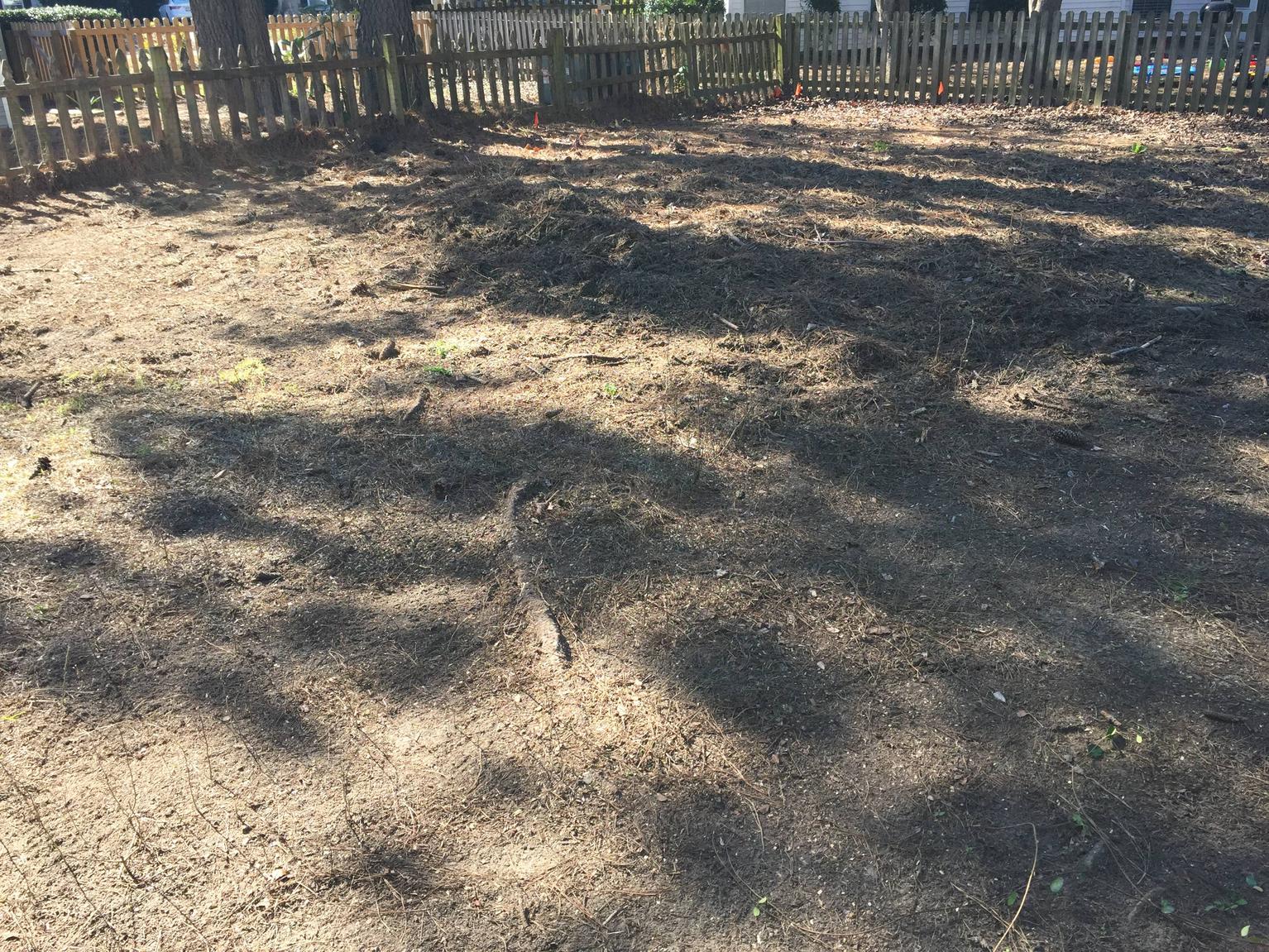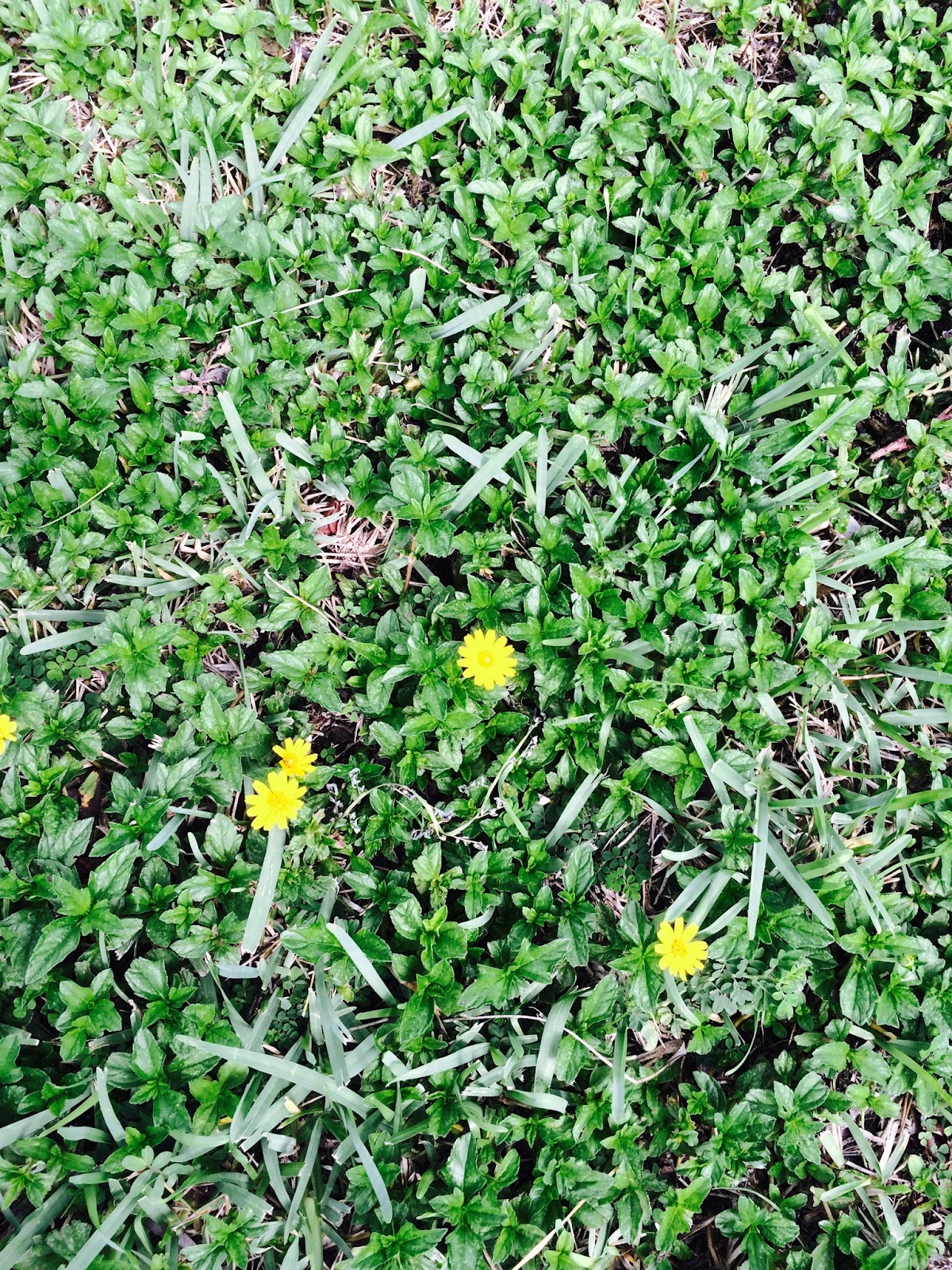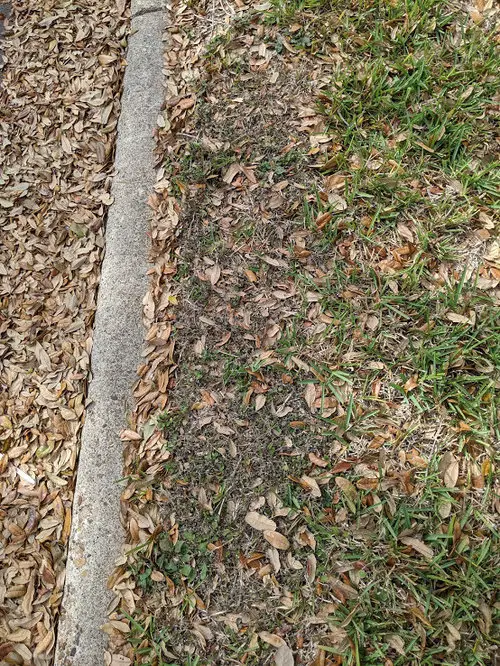Be Wary Of Fertilizer Application Rates
Across the board, most fertilizer manufacturers are overzealous about their recommended dose and feeding schedule. Start light with half the recommended amount and rate of fertilizer. You can reapply if you dont like the results. Over a season or two, youll get a clear sense of how much it takes to get a healthy lawn.
A healthy lawn will be a relatively light shade of bright green. A lawn that is a deep, almost blackish green, has been very heavily fertilized. The dark green color comes from a lot of nitrogen-based fertilizer used on the lawn. It is highly likely that some of that fertilizer has run off into the streets, storm sewers, and has made its way into local streams and rivers.
Picking The Right Fertilizer
Picking the right fertilizer depends on your lawn type and your end goal is. If you want to make your lawn greener and healthier, a product like The Andersons 16-0-8 Fertilizer with Humic DG is great for you. It contains methylene-urea that will give your lawn an even feed over eight to 10 weeks. Its also safe for pets.
The More You Know The More Your Grass Will Grow Here Are The Best Ways To Maximize Your Lawn Fertilization Schedule
Understanding when and how to fertilize your lawn is a major component to maintaining a healthy, lush yard. Fertilizers give your lawn a healthier root system while eating up unhealthy nutrients. With some simple steps, youll be on your way to having a lawn that is the envy of the neighborhood.
Also Check: How Much Does Lawn Seed Cost
When To Fertilize Your Lawn
The best time to fertilize your lawn is in the fall while grass is growing and storing nutrients. However, your lawn fertilizing schedule will depend on the type of grass you have and the type of fertilizer youre using.
Early fall means cooler weather with warm soil and ample rain, creating the perfect environment for grass to develop strong roots and grass seeds to germinate. An application of nitrogen-rich, slow-release fertilizer around Labor Day will feed your lawn and provide essential nourishment for the coming spring.
Spring is the next most important time of the year to fertilize your lawn. Spring grasses come to life hungry and ready to be fed. Fertilize your lawn as soon as the dormant grass is at least fifty percent green again.
Summer is hard on lawns because of heat, drought, insects and increased foot traffic. Feeding your lawn slow-release fertilizer at the start of summer will help keep your grass healthy and green throughout the season. This is not necessary for cool-season grasses. If insects are a problem in your yard during the summer, consider using a fertilizer with insect control.
Apply slow-release, high-nitrogen fertilizer every 90 to 120 days at the start of spring, summer and fall. Apply all-purpose fertilizer every six to eight weeks.
How To Tell If Your Lawn Has A Fungal Disease

Your lawn is an ecosystem comprised of a vast multitude of organisms, including fungi. When everything is in balance, fungus will not grow. However, several factors may disrupt this equilibrium, causing fungi to overrun your lawn and consequently become a problem.
Various factors have been found to encourage fungal overgrowth on lawns. These include:
- Improper mowing, particularly very low mowing
- Overwatering
- Planting grass strains that are susceptible to fungal diseases
- Elevated temperature and humidity
- Drought
The most obvious sign of lawn disease is a dead or dying segment on your lawn. However, not all dead and dying spots are attributable to fungus, so you should consider other possible causes as well.
Classical signs of fungus in a lawn include:
- Brown, white or yellow rings or patches that seem to grow in diameter over time
- Parts of the lawn that may appear darkened, slimy, wet or gray
- Black, purple, grey, orange or red spots on the blades and/or stems of the lawn grass
- Grass blades which may appear frayed, discolored and/or distorted
Lawn disease thrives when:
- The grass species on the lawn are susceptible to the disease-causing fungus
- The environmental conditions favor fungal growth and proliferation
- The homeowner fails to take the appropriate countermeasures against the lawn fungus in good time
Also Check: How To Apply Weed Killer To Lawn
When To Weed And Feed With Lowes Sta Green Or Scotts
While feeding your lawn once a year will improve its condition, feeding it four times a year will make it even healthier. If you put your lawn on the regular schedule it will stay lush and green all season long.
Fertilize your lawn in the spring, early fall and/or late fall . However, if you live in an area with long, cold winters, then late April, August and the end of October may be best.
In most climates, late fall tends to offer better results because thats when weeds grow stronger roots and take the herbicide to the roots along with it, killing them. You should also never fertilize any cool-season lawn during hot summer months.
If you live in the southern or western parts of the United States, such as Florida, Texas, Alabama or California fertilize your lawn in early summer and again in late summer or early fall. The application process is slightly different if you are using a product for southern lawns, such as Scotts Bonus S.
With all fertilizer schedules, you can add one treatment in midsummer, but avoid fertilizing when the temperature is too hot, particularly when its 85 degrees or above.
Recommended Reading: Controlling Foxtail In Pasture
When To Schedule Lawn Maintenance
It is important to schedule your lawn care maintenance during times that match the life cycle of the turfgrass.
- Do not add fertilizer too early in the spring. This may encourage the grass to grow during a time when it should be slow or dormant.
- Do not spray to control weeds when temperatures are warm. This increases the likelihood of damaging the lawn.
- Do not fertilize in hot mid-summer months. This can cause irreversible damage to your lawn.
- Crabgrass doesn’t develop until late spring or early summer, so don’t apply herbicide used to prevent pre-emerging crabgrass in the fall.
See Water-saving strategies for home lawns for information on how and when to water.
Recommended Reading: What Topsoil To Use For Lawn
How Soon You Can Fertilize After Seeding Your Lawn
Its not always after seeding that you should apply fertilizerthe best time to fertilize is right before or during the seeding process. Use a starter fertilizer with quick-release nitrogen since that will give the seeds a nutritional boost. When you make fertilizer a part of the seeding process, your grass will grow quicker and is more likely to end up healthy and lush.
Using Lawn Fungicides To Cure Lawn Diseases
Different people use different strategies to treat fungal diseases in their lawn. However, one of the most effective countermeasures against lawn fungus is the use of fungicides.
Fungicides are chemical products that destroy, prevent and mitigate fungal growth on plants. Lawn fungicides may be applied as dust, granules or sprayed as a gas or in a liquid solution. Sprayers are commonly used to apply fungicides onto lawn foliage. Knowing when to apply fungicide on lawns is very important. Repeat fungicide applications are often required to achieve effective control over a lawn disease and to prevent new fungal growth.
Recommended Reading: When To Water Your Lawn
When To Apply Weed And Feed
Knowing when to weed and feed is essential, but before applying the best weed and feed, it is important to identify your type of grass, because some solutions can be applied to all lawn types, and others are designed for certain types of grasses and weeds. If you apply the wrong product to the wrong grass and weeds, then damage to your healthy grass and lawn is inevitable.
When To Fertilize The Lawn In Spring
Kelly Burke is a professional turf manager for a manicured corporate campus in New England. He is accredited in organic land care and is a licensed pesticide applicator. He formerly managed the turfgrass as a golf course superintendent and has held several senior management positions at private country clubs overseeing high maintenance lawns.
The Spruce / Jayme Burrows
Most people apply a dose of lawn fertilizer in the spring, followed by one or two more applications during the growing season. If you are going to fertilize your lawn, do not do it too early in the season. The best time for that first application is late spring, just as the green grass is beginning to grow eagerly. In early spring, the grass is putting energy into root development. If you apply fertilizer too early, it will divert the plant’s energy into leaf development too soon.
Don’t Miss: How To Use Roundup For Lawns
Add Fertilizer To Your Lawn Maintenance Routine
To get that grass is greener on the other side of the fence look, you will also need to add fertilizer to your lawn care routine. Fertilizing a lawn is an easy do-it-yourself project for homeowners, the only supplies youll need are a lawn spreader and a high-quality fertilizer that meets the requirements of your grass variety.
There are two types of spreaders, a drop spreader and a broadcast spreader. Drop spreaders are best for small lawns and broadcast spreaders are ideal for larger areas.
Before fertilizing, youll need to water your lawn a few days in advance to prepare the soil. Then, youll need to get your spreader ready. Fill the spreader with an appropriate fertilizer product from a home improvement or gardening store. The packaging for the fertilizer should give directions about how to adjust the settings on the spreader.
Then simply walk along the perimeter of the lawn to fertilize and feed your lawn. Fill in the middle of the lawn with the fertilizer and properly dispose of the remaining product when you are done.
Spring Lawn Care Steps

Rake
Spring raking removes lingering fall leaves and grass blades that did not survive winter. Left alone, these dead blades add to your lawn’s thatch layer. Raking also loosens matted grass clumps caused by snow mold, which can smother new growth.
Use a spring-tine rake with a strong upward pull to remove dead grass. Rake when soil is not soft and muddy, or you risk pulling up healthy grass crowns.
Overseed
Fill bare or thin spots in the lawn by overseeding. Late spring is the best time to overseed warm-season grass. Fall is the ideal time for cool-season grass, but in colder regions, spot-seeding small areas in spring yields good results. When you overseed, apply a slow-release nitrogen fertilizer. Five weeks after overseeding, apply a quick-release nitrogen feed.
Learn about causes of bare spots in lawns, how to prevent them and how to treat them.
Aerate
Vital for a truly healthy lawn, aeration is the solution for compacted soil. How often you should aerate your lawn depends on soil type and how you use your lawn. Late spring to early summer is the right time to aerate warm-season grasses. Fall is the best time for cool-season types. But if you didn’t get to it last fall, you can tackle it in early spring. Learn the secrets behind aerating and how to aerate properly.
Dethatch
Spring is the right time to dethatch turf. Aim for early spring for cool-season grasses and late spring to early summer for warm-season grasses. Learn more about dethatching.
Weed
Fertilize
Water
Also Check: How To Prepare For New Lawn
Weed & Feed With Post
Weed and feed products with labeling that states they will kill weeds growing in your yard typically contain post-emergent herbicide. These products are designed to kill broadleaf weeds such as dandelion, clover, and purslane. They wont kill or stop invasive grasses like crabgrass.
- Most weed and feed products are designed to kill established weeds in your yardthese products contain post-emergent herbicide.
- Post-emergent herbicide kills established broadleaf weeds
- Weed and feed with post-emergent herbicide often show dandelions and clover on the packaging.
- Choose this weed and feed if you want to kill established weeds in your yard.
If your yard is currently overrun with established non-grassy weeds, a weed and feed product with post-emergent herbicide is the best bet. This herbicide is designed to infiltrate weeds through their leaves before killing them. Its a great way to wipe out clusters of weeds while the fertilizer gives your grass a growth spurt.
Tips On How To Protect Your Pets After Applying A Scotts Weed And Feed Product
Below are the important tips to follow
Read Also: What Causes Red Thread In Lawns
Keeping Up With Fertilizing Schedules
You may love your lawn so much that you print out this blog post and hang it on your fridge. You could even set up reminders in your digital calendar to notify you when its time to fertilize for the season. But if you prefer an easier alternative, sign up for our Monthly Lawn Tips emails. Well send you an email each month with tips on fertilizing, mowing and dealing with pest or disease problems in your lawn.
Preventive Fungicides: How They Work
Contact fungicides are sometimes called residual fungicides. This term describes the ability of these products to remain on the plant surface for several days after application. During this period, they offer continued protection against fungi. They are therefore prophylactic against a number of fungi species that cause lawn diseases.
The preventive benefits offered to plants remain as long as the fungicide doesnt get degraded by environmental elements such as sunlight or washed off by irrigation, wind, or rain. Repeated applications are therefore essential to ensure that the fungicide stays on the plant and continues to provide protection from fungi.
Read Also: Do It Yourself Lawn Sprinklers
Tips For End Of Winter And Early Spring Lawn Care
Updated on February 22, 2019 by Keith Critchley
With the crazy weather weve been getting this winter, lawn care may be the furthest thing from your mind. But beautiful, healthy grass requires special attention in all seasons. There are ways that you can prepare your lawn for the cold weather and help it bounce back from the long, harsh winter. The good news is that grass is resilient with a little assistance it can be back to its lush, green self in no time.
So, what do homeowners need to do in the winter to ensure a great looking lawn in the spring? Here are seven key tips for keeping your grass strong through the cold months and helping it to perk up as soon as the snow melts.
Is It Too Late To Fertilize My Lawn In October
Applying fertilizer in late August or early September, however, will add nutrients that help the grass to overcome summer stresses. Another application of slow-release fertilizer in late October to early November will promote earlier green-up in the spring, without the excessive shoot growth that can be damaging.
Don’t Miss: What Is The Smallest Zero Turn Lawn Mower Made
Keep The Yard Clear Throughout The Winter
As youre wrapping up yardwork in the fall, be sure not to leave anything behind. Rake away all the leaves and put away sprinklers, hoses, garden furniture, yard toys and decorations. If something is left on the surface, the grass will get matted down during the winter months. With the added moisture of rain and snow, this can also make the perfect environment for pests and mold to sneak in and damage the turf or kill it.
Abc Can Care For Your Lawn

Still feeling overwhelmed? Theres no reason why you have to deal with lawn problems alone. Reach out to ABC and well have our lawn experts come out to determine what the issue is and how best to handle it. We can also provide you with seasonal fertilization treatments to keep your yard nourished and healthy.
Don’t Miss: Which Grass Seed Is Best For My Lawn
Types Of Fertilizer To Use On Lawns
Here are the basic types of fertilizer to use on lawns:
Slow-release You dont have to use slow release fertilizers as often, but they are usually more expensive.
Fast-release You get quick results with a fast-release fertilizer, but you have to apply them in smaller amounts and more frequently. You can burn your lawn with a fast-release fertilizer if you use too much.
Weed and feed Try to identify your weeds before using a weed and feed product and make sure your weed is listed on the product label. Take special care around trees, shrubs, and garden plants.
Organic materials such as compost and manure The essential nutrients arent as concentrated in these types of materials, so you have to use a lot. Compost or dry manure before applying it to the lawn, and be aware that some manures, particularly horse manure, may contain weed seeds.
Liquid fertilizers These arent recommended because they are hard to apply evenly and require frequent applications.
